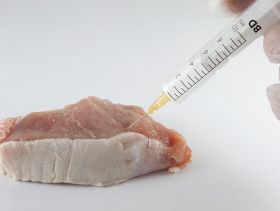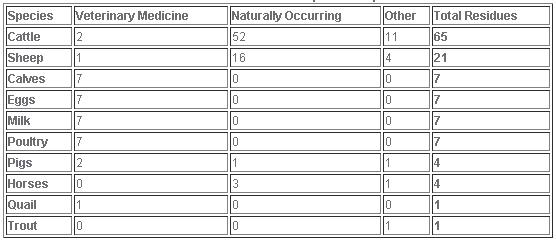 ounting over the threat of veterinary medicine residues in food products imported into the UK.
ounting over the threat of veterinary medicine residues in food products imported into the UK.And the concern is deepening because the inspection process to root out products with high residue levels and illegal veterinary products is due to end in the coming year.
Following the horse meat scandal in the UK, testing horses for the presence of Phenylbutazone or Bute has been one of the key issues for the Veterinary Residues Committee over the last year.
In the statutory scheme that investigates residues in domestically produced products, the VRC found that there was a very low level of residues discovered and none of the samples would have been a risk to human health.
However, the VRC said that there was greater concern over the levels of residues being found in imported food products.
The VRC said that inspection of imported food stuffs needed to continue the committee said it was concerned that the non-statutory surveillance scheme is due to end with the conclusion of the 214/15 plan.
In the Statutory Surveillance Scheme the VRC took a total of 34,811 samples and used 37,225 analyses when testing for residues.
Out of all these samples 124 residues were detected in excess of the statutory levels in 118 samples.
Of these, 82 were either environmental contaminants or substances which occur naturally in animals.
In all 36 samples – 0.1 per cent – contained residues of pharmacologically active substances.
The VRC carried out follow up investigations in the cases where residues were found and in 21 cases the committee found that the rules for the use of the veterinary product had not been fully followed.
However, the VRC said that there had been no risk to human health.
Of the 21 cases, nine were because of cross contamination of medicated feed.
One sample was found to contain chloramphenicol because of contaminated feed additive enzyme.
Two samples were found to contain ibuprofen, although in one case the VRC concluded that the sample had been contaminated by the sampling officer, who was taking medication.
One sample of cattle live was found to contain phenylbutazone. Investigation, however, found there was no evidence to suggest that there was any use of the medication on the farm.
In another sample, the VRC found evidence of leucomalachite green in fish. Although other target samples were taken no further residues were discovered.
The VRC said that it was reassured that with the large and wide-ranging programme of surveillance, very few results of concern to human health were detected.
“Overall, the Statutory Surveillance Scheme results demonstrate that when used as directed, veterinary medicinal products did not result in residues of human health concern in 2013 and that consumers can continue to have confidence in purchasing UK produced foodstuffs of animal origin<” the VRC said.
UK Produce 2013 Non-Compliant Samples

The VRC also collected 600 samples in a non-statutory scheme and carried out 1,629 analyses.
These showed 10 results with residues above the action limits of 1.6 per cent.
The substances that continue to be found in imported products were chloramphenicol, clopidol and malachite green.
The VRC said the discovery of these products is of concern.
“We hold the view that surveillance of imported foods for residues of medicines used in countries outside of the EU must be maintained and coordination improved to strengthen non-statutory surveillance with results from other source,” the VRC said.
The VRC is now to work with the Food Standards Agency and retailers to find ways to continue testing imported food for residues.
Imported Produce 2013 Substances Found






